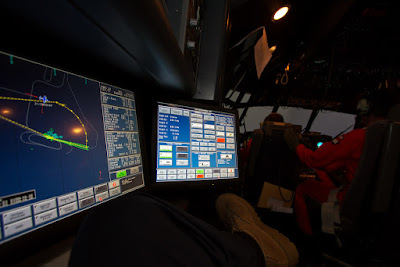13 Februari 2016
Inside of TNI AU C-130 H Simulator (photos : anas nurhafidz)
Following on from the Australian Government’s decision to gift four of their retired C-130H aircraft to the Indonesian Air Force (TNI-AU) in 2011, a subsequent contract saw the TNI-AU procure a further five aircraft along with spares and the former Royal Australian Air Force’s (RAAF) C-130H full mission simulator (FMS).
Prior to the dispatch of these aircraft, the TNI-AU ran a competition to carry out pre-delivery maintenance of the aircraft and train the crews to ferry the aircraft to Indonesia. That contract was subsequently won by Airbus Military with Northrop Grumman Integrated Defence Services actually undertaking the pre-delivery maintenance overhaul and CAE Australia, the aircrew training.
The initial four aircraft were delivered by the end of October 2014 and the last aircraft of the subsequent five is about to be delivered.
As part of the five aircraft buy, Airbus brought CAE Australia under contract to undertake a major service of the FMS and remove any ‘Australian eyes only’ equipment prior to delivery to Halim Perdanakasuma air base. This was undertaken at RAAF Base Richmond, where the simulator is still currently located.
‘The simulator is now ready to go and we are just waiting for the completion of the new simulator bay at Halim which we expect to be completed by June this year,’ Peter Redman, VP CAE Asia Pacific tells MTSN. ‘We expect the FMS to be ready for training in the August-September timeframe.’
The ex-RAAF FMS will join another C-130H FMS that CAE Australia supplied to the TNI-AU in 2000 and that the company is now in discussions to upgrade.
The TNI-AU is no stranger to C-130 operations and currently operates a mixed fleet of C-130B, KC-130B, C-130H and the commercial Hercules variant, the L-100. Exact fleet numbers are unclear due to serviceability and accident issues. The last accident occurred in June 2015 when a C-130B crashed into a suburb of Medan after taking off from Soewondo air base killing all on board and a number of people on the ground. The conservative death toll was put at 140.
The June 2015 crash was the fourth C-130 airframe to be lost since 2000 and clearly highlights issues with maintenance and training. With perhaps too much haste, TUI-AU issued a statement on 7 July 2015 saying that it was going to replace the C-130 with the A400, C-17 or an Antonov design. With the accident report not yet published, blaming the airframe without considering operating issues seemed a little harsh.
The link between proficient training, maintenance and an air force’s accident rate has always been appreciated but the TNI-AU’S C-130 saga also parallels that of Indonesia’s air carriers. In June 2007 Garuda International was banned from flying into European airports by the European Commission and although this ban was lifted in 2009, four Indonesian carriers are still currently banned from Europe due to safety concerns.
The delivery of a newly refurbished C-130H FMS next June is just one step towards improved performance. The TNI-AU needs to reappraise its complete training philosophy, flight safety and maintenance cultures; buying new and more complex aircraft is not the answer without having a robust training and safety culture in place first.
(Shephard)
Langganan:
Posting Komentar (Atom)













Tidak ada komentar:
Posting Komentar